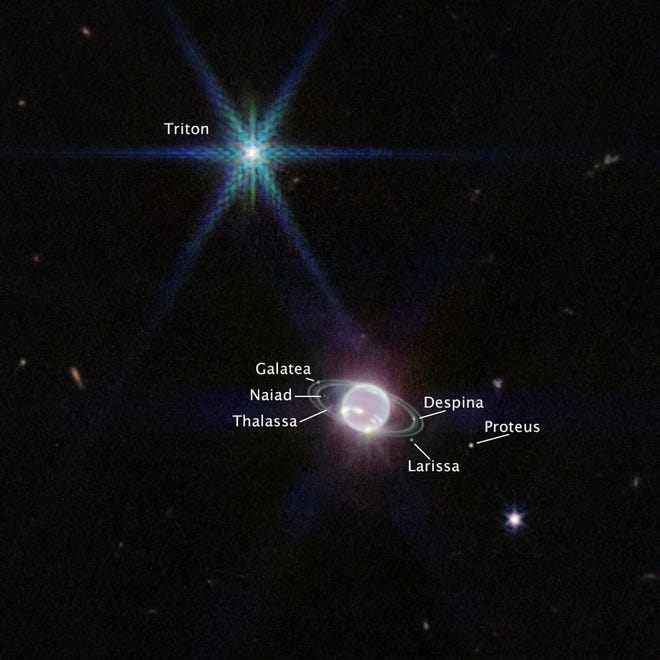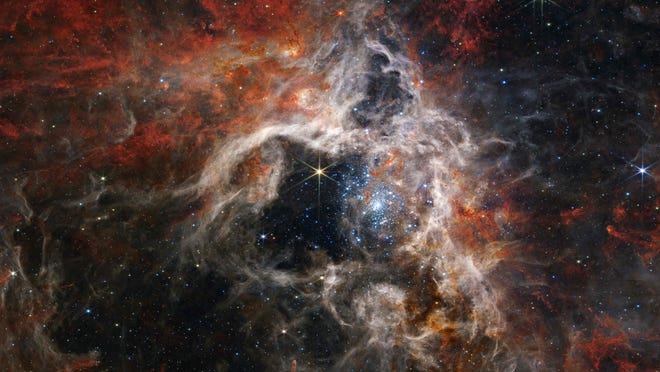The James Webb Space Telescope has given us some of the sharpest images of the planets in our solar system, and newly released images show Neptune and its rings for the first time since 1989.
Not only were the rings captured, but so were the planet’s dust bands.
“It has been three decades since we last saw these faint, dusty rings, and this is the first time we’ve seen them in the infrared,” Heidi Hammel, Webb interdisciplinary scientist for solar system observations and vice president for science at the Association of Universities for Research in Astronomy, said in a statement.
The images, released by NASA Wednesday, were taken using the telescope’s near-infrared camera, which has three infrared filters that reveal details of planets that can’t be seen by the human eye. Therefore, Neptune doesn’t appear blue in the photos, as it normally does.
But the camera’s image quality allowed the telescope to capture the rings.
Neptune sits at the end of our solar system. The ice giant is about 30 times farther from the sun than Earth, NASA says, and is the only planet not viewable to the naked eye. It takes about 165 years for the planet to orbit the sun, and it’s so far from the sun that high noon on the planet is like dim twilight on Earth.
A space tarantula? Stunning, star-forming nebula captured by NASA’s James Webb Telescope
More: ‘Sharpest’ images of the Orion Nebula show how powerful James Webb telescope really is
The telescope also captured details of the planet’s atmosphere. Neptune is made up mostly of hydrogen and helium, but high-latitude clouds of methane can be seen in various regions. A thin bright line near the equator could be a “visual signature of global atmospheric circulation that powers Neptune’s winds and storms,” NASA says. The planet can whip up winds of over 1,200 mph.
Near the rings are six of the planet’s 14 moons – Galatea, Naiad, Thalassa, Despina, Proteus and Larissa. In a wide shot of the planet, there appears to be a bright star northwest of Neptune, but that’s actually its large moon, Triton, the only known moon that circles its planet in the opposite direction.
The James Webb Space Telescope has also taken images of Jupiter and Mars.
Follow Jordan Mendoza on Twitter: @jordan_mendoza5.




